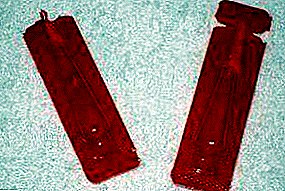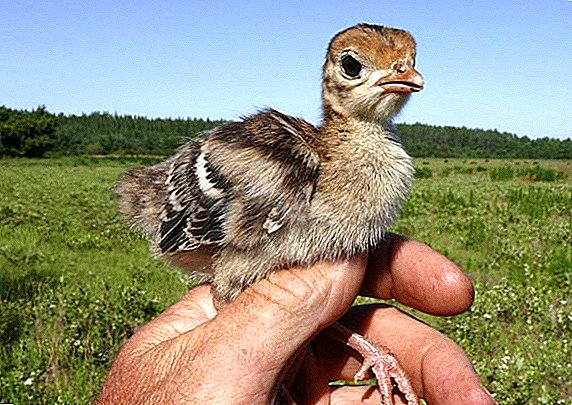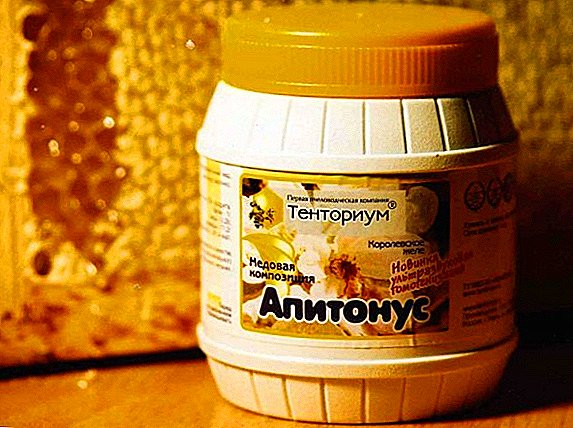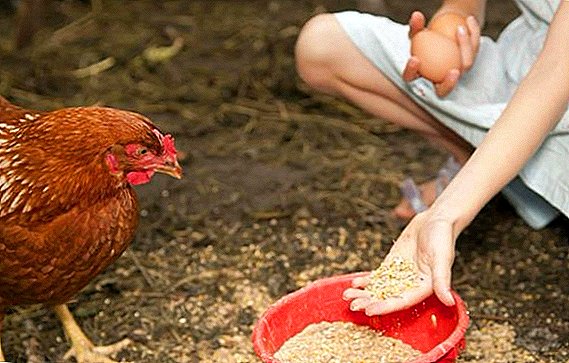 Growing laying hens is a fairly profitable and profitable business. When organizing proper, balanced nutrition and proper care, chickens actively carry eggs, which are in great demand among consumers. However, in order for the birds to be systematically carried and the eggs to have a high nutritional value, it is necessary to adhere to several important rules when drawing up the daily diet.
Growing laying hens is a fairly profitable and profitable business. When organizing proper, balanced nutrition and proper care, chickens actively carry eggs, which are in great demand among consumers. However, in order for the birds to be systematically carried and the eggs to have a high nutritional value, it is necessary to adhere to several important rules when drawing up the daily diet.
Overfeeding and malnutrition
Any farmer who breeds chickens knows that two basic rules should be followed when organizing proper diet:
- Do not overfeed bird.
- Do not force the chicken to starve.
Only in the case when the bird is provided with an adequate diet, it will be able to please with good health, excellent productivity and high quality eggs. The problem for novice poultry farmers is to find a harmonious balance and form a daily menu for domestic birds.
Check out the rating of chicken meat, egg, meat, egg, decorative direction.

How much ready feed does a hen needs a day
The diet of the hens that are grown in household conditions is very different from the chicken menu on large farms. Poultry are fed with natural, selected products that positively affect the number of eggs and their quality properties.
In the year one individual eats about 40 kg of special feed and 14 kg of various greens. Respectively, the required dose per day is 120 g of feed divided into two doses. The daily calorie intake of chicken should be about 300-320 kcal, and the food should contain 20 g of pure protein and 60-70% of carbohydrates.
Did you know? Eggs are formed at night, so it is recommended to feed the chicken more intensively in the evening, especially in the winter period.
In addition, the bird should drink about 300 ml of liquid per day.
These figures are characteristic for feeding adult chicken. How to feed the chickens, let's look further.
For chickens
When growing the young generation of layers, the main task of the poultry farmer is to provide them with comfortable living conditions and full, regular nutrition.
Learn how to choose an incubator, why you need an ovoscope and how to get chicks from the incubator.
1-7 weeks
Chickens should receive the first portion of feed within 8-16 hours after they hatch.
Important! Do not skip the first feeding. It is proved that chickens that received feed in the first hours of life, in the future become 30-35% more productive.
Feed the little hens should be every 2-2.5 hours, following the schedule even at night. It is also necessary to provide round-the-clock access to fresh water by organizing special drinkers so that birds do not get wet, as this can provoke the development of various diseases.
Until 4 weeks old, chicks cannot be fed whole grains, as their digestive systems cannot digest such heavy food. Cereals before serving need to chop well and steam in water.
The optimal feed for newborn chickens is a mixture of corn and barley grits, mixed with a small amount of cottage cheese and one egg yolk. An obligatory product of the ration of chickens of the first days of life is greens: nettle, alfalfa. For 5-6 days of life, chopped vegetables and mineral supplements can be added to the menu: chalk, shell, egg shells, carrots.
Video: How to Make Chicken Feed
Learn more about how to feed chickens in the first days of life, how to make a drinker, how to treat diarrhea and other diseases of chickens.
Older chickens are fed less frequently. Their digestive organs are formed and strengthened, so you can add various cereals, vegetables, dairy products, mineral and vitamin supplements to the diet.
The approximate daily ration of hens at 6-7 weeks is:
- cereals (barley, corn) - 15-22 g;
- skim milk - 15-20 g;
- low fat cottage cheese - 2-3 g;
- meat or bone meal or fish meal - 1.4 g;
- meal - 0.6 g;
- greens - 15-20 g;
- boiled potatoes, roots - 5-10 g;
- lasting products - 1 year
 Approximate norms of feeding chickens, g per head per day
Approximate norms of feeding chickens, g per head per day8-20 weeks
At the age of 4-5 months, the chicks begin to actively form bone and muscle tissue, and a reserve of egg-laying is laid. That is why the caloric intake is slightly reduced to 260-270 kcal per 100 g of feed. At this time, the chicken needs to:
- 15-16% of proteins;
- not less than 5% fiber;
- calcium - 2-2.2%;
- phosphorus and sodium - 0.7% and 0.2%, respectively.
Learn how to choose and maintain laying hens, what measures to take to prevent chicken diseases, how to treat pasteurellosis in domestic chickens, diarrhea, Newcastle disease.
Approximate daily menu for chickens aged 8-20 weeks:
- wheat - 35 g;
- barley - 29.5 g;
- millet, bran - 10 g;
- hydrolysis yeast - 3.5 g;
- meat and bone meal - 3 g;
- chalk, shell - 1.5 g;
- salt - 0.5 g

For adult chickens
An adult domestic chicken hen, in terms of content, not only costs more, but also requires the preparation of an individual menu, taking into account age and physiological needs.
Learn what is the technology of slaughter and processing of chickens, how to properly pluck a chicken with a nozzle, how to properly use chicken droppings, how useful raw chicken eggs are, how to check the egg's freshness.
20-45 weeks
By the end of the 45th week the formation of the bird's body is completely completed At this time, it needs an increased content of protein, which should be 17% of the total nutrition, and calcium, which is 3.6%. The energy value of the feed remains at the previous level - 270 kcal / 100 g
During this period, the bird comes to the peak of productivity, and therefore needs a good, high-quality diet. An approximate diet looks like this (in grams):
- cereals - 120 (of which corn - 40, wheat - 20, barley - 30, oats - 30);
- wet mash - 30;
- boiled potatoes - 100;
- cake - 7;
- chalk - 3;
- salt - 0.5;
- bone meal - 2;
- yeast - 1.
 Approximate ration of layers depending on age (gram per head)
Approximate ration of layers depending on age (gram per head)Important! It is forbidden to give the chicken at any age green or sprouted potatoes, as well as add a decoction of such root crops to the diet, since the solanine contained in them can provoke bird poisoning and cause serious problems with the digestive tract.
After 45 weeks
After the chicken reaches the age of one year, its diet changes slightly: its caloric content decreases to 260 kcal / 100 g, the volume of raw protein decreases to 16%, and that of phosphorus to 0.6%. This increases the percentage of calcium - up to 3.8%. Excess nutrients can trigger a rapid weight gain of the bird and a drop in the number of eggs.
Food schedule two times: in the morning and in the evening. The chicken menu can offer (in grams):
- wheat - 50;
- barley - 40;
- corn - 10;
- bran - 20;
- chalk, shell - 3 and 5, respectively;
- bone meal - 1;
- salt - 0.5.
 The basis of the diet of an adult hen should be grain (crushed or whole grains), mixtures of grain and combined feed.
The basis of the diet of an adult hen should be grain (crushed or whole grains), mixtures of grain and combined feed.How to give homemade food and how much it will need
If there is no possibility or desire to acquire ready-made feed for layers, they can be prepared independently.
How to cook food
To make good nutrition for the chicken yourself, you need to know which ingredients should be included in it:
- proteins: protein sources are dairy products, fish meal;
- vitamins: greens - nettle, tops of plants; cereals - oats, barley, wheat; vegetables - carrots, beets, potatoes;
- vegetable fats: millet, corn;
- carbohydrates: boiled potatoes;
- cellulose: root crops, oilcake;
- nutritional supplements: chalk, shell, eggshell.
Find out when chickens start to lay eggs, how to increase egg production in winter, the reasons and methods for eliminating unsatisfactory egg production, why chickens carry small eggs, peck eggs and what to do.
Most of the feed should be cereals. For example, for one chicken per day it is necessary: 70 g of corn and wheat, 50 g of barley, 20 g of oats, 50 g of millet, wheat bran and makuha, 25 g each, fish or bone meal - 10 g. In summer, the layer willingly eats fresh grass, vegetable tops, root vegetables. The bird spends a lot of calcium on the formation of eggs, so it is necessary to regularly add to the food in the ground form of chalk, egg shells, shell.
Video: preparation of feed for layers
Did you know? Egg shells are crushed before giving to the chicken. If you give pieces or parts of the shell, it will begin to peck the eggs that are laid.
Daily rate
Based on the physiological needs of the bird, you can make an approximate daily diet per one hen (in grams):
- corn - 45-50;
- wheat - 12-15;
- barley - 7-10;
- sunflower meal - 7-10;
- meat and bone meal - 6-8;
- fish meal - 5-6;
- fodder yeast - 4-5;
- grass meal - 3-5;
- peas - 2-3;
- vitamins - 1-1,5;
- salt - not more than 0.3.
 A great alternative to the previous recipe may be the following (in grams):
A great alternative to the previous recipe may be the following (in grams):- cereals: corn - 45, wheat and barley - 12 each;
- sunflower meal (you can take soybean cake) - 7;
- fish meal (can be replaced with meat and bone) - 6;
- crushed peas - 7;
- chalk - 6;
- grass meal (from alfalfa or hay) - 2;
- yeast - 0.3.
An important factor in good poultry productivity is the conditions of detention, pay attention to the rules for choosing a chicken coop, making the chicken coop independently at the dacha, practical advice on making a chicken coop with your own hands, namely, how to do it: ventilation in the chicken coop, drinking bowls and feeders for chickens, roost and nest .
It is regularly recommended to “pamper” the hens with yeast food, which helps to get rid of avitaminosis. It must be given in a dose of 15-25 g per chicken per day.
Prepare yeast food as follows:
- 10 g of fresh yeast (not dry) are diluted in 0.5 liters of warm water.
- Add to the yeast water 1 kg of feed.
- Stir and set aside for 7-8 hours in a warm place.

Vitamin supplements for laying hens
In addition to staple foods, vitamin supplements should be included in the layer’s diet that allow you to:
- improve poultry health;
- improve and strengthen the immune system;
- increase the body's resistance to external factors;
- increase disease resistance;
- improve egg production and egg quality.
Sources of calcium are:
- a piece of chalk;
- shell;
- crushed bones;
- eggshell (crushed).
 Experts recommend adding premixes to food - combined feedings containing calcium, phosphorus, sodium, a large number of amino acids not synthesized in the body of birds - cystine, lysine. The use of premixes can significantly increase egg production and improve the health of the hen.
Experts recommend adding premixes to food - combined feedings containing calcium, phosphorus, sodium, a large number of amino acids not synthesized in the body of birds - cystine, lysine. The use of premixes can significantly increase egg production and improve the health of the hen.Avitaminosis - a rare phenomenon in chickens, because in the summer they feed heavily on green fodder and grass. However, for the prevention of the disease, twice a year, multivitamin preparations are prescribed that strengthen the immune system, increase the protective functions of the body.
All supplements are taken in the dosage specified by the manufacturer in the instructions for the drug.
Despite the fact that the hen is undemanding, it is necessary to observe the norms of feeding. Having organized a high-quality, balanced, full-fledged diet for the bird, you will get high rates of productivity and excellent egg quality. The lack of any of the useful components will lead to depletion of the chicken, reduced immunity and, as a consequence, poor egg production.












